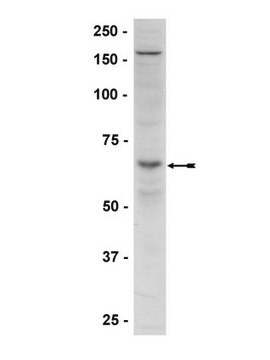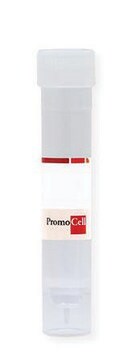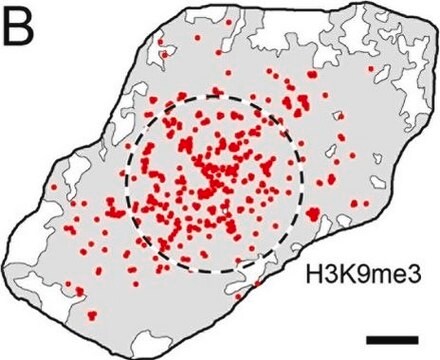CBL188
Anti-Clathrin Antibody, clone CHC5.9
clone CHC5.9, Chemicon®, from mouse
About This Item
Recommended Products
biological source
mouse
Quality Level
antibody form
purified antibody
antibody product type
primary antibodies
clone
CHC5.9, monoclonal
species reactivity
bovine, amphibian, rat, pig, human
manufacturer/tradename
Chemicon®
technique(s)
immunohistochemistry: suitable
western blot: suitable
isotype
IgM
NCBI accession no.
UniProt accession no.
shipped in
wet ice
target post-translational modification
unmodified
Gene Information
human ... CLTC(1213)
Specificity
Immunogen
Application
Suitable for frozen sections
Western blotting KNOW SPECIES
Optimal working dilutions must be determined by the end user.
Epitope Tags & General Use
Organelle & Cell Markers
Physical form
Storage and Stability
Analysis Note
Positive reactions using HeLa, SV-40 and RVF-SMC cultured cell lines.
Legal Information
Disclaimer
Not finding the right product?
Try our Product Selector Tool.
Storage Class Code
13 - Non Combustible Solids
WGK
WGK 3
Flash Point(F)
Not applicable
Flash Point(C)
Not applicable
Certificates of Analysis (COA)
Search for Certificates of Analysis (COA) by entering the products Lot/Batch Number. Lot and Batch Numbers can be found on a product’s label following the words ‘Lot’ or ‘Batch’.
Already Own This Product?
Find documentation for the products that you have recently purchased in the Document Library.
Our team of scientists has experience in all areas of research including Life Science, Material Science, Chemical Synthesis, Chromatography, Analytical and many others.
Contact Technical Service







